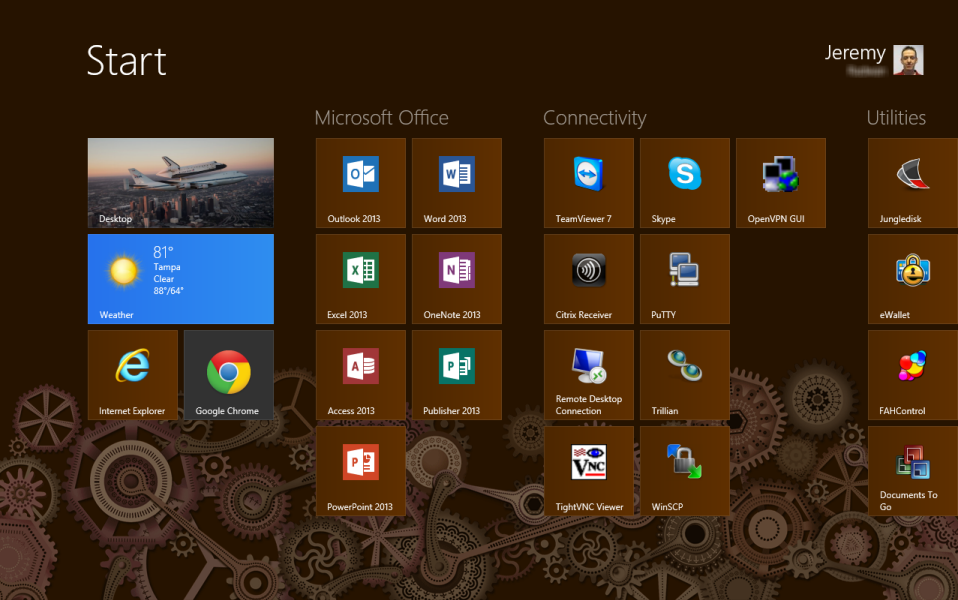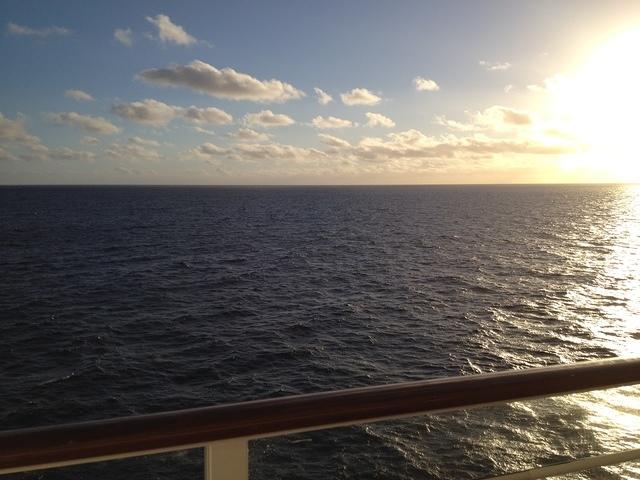Last month I picked up a 32gb Microsoft Surface RT tablet as a combined birthday/Christmas present for my daughter. In a bit of pre-planning I upgraded her laptop to Windows 8 so she had time to get familiar with the new OS before she finally got the tablet last week. So far, it’s been a hit, despite some of the setbacks of WinRT, but I’ll get into those later.
Disney Cruise: back home (and recap)
No sleeping in today! We woke up early (6:30am) to find the ship already docked back in Port Canaveral. Since we were using the Express Walk-Off service we decided to skip breakfast on the ship and just debark and get through customs. In hindsight, we should have not been in such a rush to leave, but being one of the first families to debark meant no lines at all. In fact, by 7:15am we were through customs and 15 minutes later we were in the car and on the road home.
Disney Cruise: Day 3
After turning in late (early) last night I ended up sleeping in a bit this morning. When I woke up around 8:00am my daughter had just woken up herself and my wife had gone to exercise in the fitness center. At some point overnight (or earlier that morning) the Dream had docked at Castaway Cay, Disney’s private island in the Bahamas.
Disney Cruise: Day 2
This morning we awoke to a beautiful sunrise over the Atlantic Ocean in the Bahamas.
Hard to have a bad day starting off with a view like that …
Disney Cruise: Day 1
Well, a ship, actually. For the next three days we’re on the Disney Dream, cruising to the Bahamas on a short family vacation for Thanksgiving.
GoalZero Rock Out portable speaker
 The GoalZero Rock Out portable rechargeable speaker, which I received as a recent birthday present, is the latest addition to my solar-chargeable gadget collection.
The GoalZero Rock Out portable rechargeable speaker, which I received as a recent birthday present, is the latest addition to my solar-chargeable gadget collection.
The Rock Out unzips around its edges (like a suitcase) to reveal the on/off switch, mini-USB port for charging, audio input jack, and audio output cable. The other half contains a mesh pocket just the right size to hold your smartphone. Fire up your favorite music app, plug in the cable, turn on the speakers, zip up the package, and you’re ready for music on the go. A set of elastic straps along the back make it relatively easy to attach the Rock Out to the handlebars of your bike or just about anywhere. The sound quality is excellent and the speakers are loud, although there are no external volume controls: you have to use the volume on your phone which is a bit of a pain since it involves having to unzip the pouch to access the device (not an easy feat while riding a bike!).
While the Rock Out isn’t a formal part of our hurricane evacuation kit, the fact that it can be charged via the solar panels I already have means it will definitely come with us should that time ever come. For now, though, the Rock Out (plus iHeartRadio on my iPhone) is serving its primary purpose as an entertainment device on our family bike rides.
Switching from Jungle Disk to SpiderOak
Back in October 2007 I started using Jungle Disk and Amazon S3 (Simple Storage Service) for my online backups. At the time, it was one of the cheapest and more reliable ways of backing up my important documents across multiple platforms (Windows and Linux) to the cloud. Even after Rackspace acquired Jungle Disk in 2008, I continued to use (and be very satisfied with) the service as I was grandfathered into the one-time $20 payment for lifetime use of the client along with the $1/month Plus service for web access and uploading changes only (instead of the entire file, to save time). In 2010, Jungle Disk released an iOS app that let me access my stored files on my iPhone. But after all of that, support seemed to drop off and the last software update (v3.16) was back in May 2011. Still, everything was working fine and I wasn’t really considering switching, until I heard Steve Gibson echo a similar sentiment about the fall of Jungle Disk on episode #373 of his Security Now! podcast.
I decided to start looking into possible replacements for Jungle Disk, so I went back through episode #349 of Security Now! when Leo and Steve discussed some other available cloud storage solutions and really liked SpiderOak due to its “no knowledge” security policy, which fit with Steve’s mantra of “trust no one” (TNO).
Continue reading ‘Switching from Jungle Disk to SpiderOak’ »
Quest for the Quantal Quetzal
My server upgrade from Ubuntu 12.04 (Precise Pangolin) to the newly released 12.10 (Quantal Quetzal) tonight was one of the smoothest for me in recent memory. The only problem I had this time around was an issue with ZoneMinder due to some “non-standard” symlinks I was using. Once I corrected those, the package upgraded without incident. The only other minor problem was due to the use of smbfs for my NAS mounts. I just had to switch the type to cifs in /etc/fstab and re-mount the shares. Now I’m set until Raring Ringtail next year.
Windows 8 RTM … accepting the inevitable

A few weeks ago we got the Windows 8 RTM at work and started installing and upgrading the operating system on our IT machines to get a jump on learning our way around Microsoft’s latest OS before rolling it out to the rest of the office.
I’ve been using the Consumer Preview of Windows 8 on my main machine at work since it was released back in March and while the final RTM version is faster and slightly more polished, not much has changed since the CP, including the fact that I’m still not enamored with Microsoft’s latest desktop offering.
Continue reading ‘Windows 8 RTM … accepting the inevitable’ »
WIJFR: Pandora’s Star
The year is 2380. The Intersolar Commonwealth, a sphere of stars some four hundred light-years in diameter, contains more than six hundred worlds, interconnected by a web of transport “tunnels” known as wormholes. At the farthest edge of the Commonwealth, astronomer Dudley Bose observes the impossible: over one thousand light-years away, a star . . . vanishes. It does not go supernova. It does not collapse into a black hole. It simply disappears. Since the location is too distant to reach by wormhole, a faster-than-light starship, the Second Chance, is dispatched to learn what has occurred and whether it represents a threat.
I just finished “Pandora’s Star” by Peter F. Hamilton, the first book of his Commonwealth Saga. This was another recommendation by Steve Gibson (many times) on his Security Now! podcast that I finally got around to reading. It had been over a year since I last read some good hard SF so this was a pleasant return to the genre.
In the 24th century, mankind has spread out among the stars thanks to Compression Space Transport’s (CST) wormhole network. Much like the web of the airline routes of old, CST’s train system carries millions of passengers instantly across hundreds of light years to distant planets. The average Commonwealth citizen sports a myriad of optical inserts for heads-up-displays, an e-butler, and a connection to the ubiquitous unisphere (the intersolar internet on steroids). Memories are backed up constantly on insert chips. Killed in an accident? No problem, just spend a few weeks in rejuvenation and have your memories re-loaded into a newly cloned body. Body death no longer means complete death and people live for hundreds of years with many different re-lifes.
Lowly astronomer Dudley Bose has confirmed that the envelopment of the Dyson Alpha and Dyson Beta stars occurred instantaneously. The only explanation is an unknown, superior alien species has constructed a Dyson sphere around both star systems. The Dyson system is too far away to reach by the existing wormhole network, so the Commonwealth government decides to build a wormhole-based FTL starship to go and investigate the envelopment. Did the inhabitants of the Dyson systems enclose themselves for protection, or did someone or something else imprison them? You’ll quickly understand the title reference when the Second Chance arrives at the Dyson Pair.
“Pandora’s Star” combines the astronomical engineering feats of “Ringworld” with the strange, blockaded alien species like “The Mote in God’s Eye” and the governmental/political themes of “Foundation” into a very enjoyable SF epic. Be warned, however, it ends abruptly and leads directly into “Judas Unchained,” which I’ve already started.

